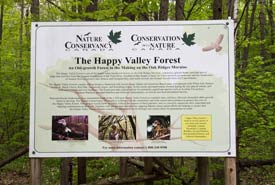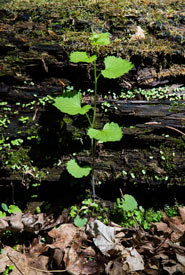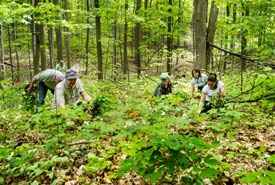Liberating the Happy Valley Forest from invaders

Happy Valley Forest, ON (Photo by Miguel Hortiguela)
It was a covert ground-assault by a small group of dedicated resisters, led by Thomas Unrau of the Nature Conservancy of Canada, on an invader to the perhaps not-so-Happy Valley. I'd signed up to participate in a valiant effort to thwart the relentless advance of an intruder known to choke the life out of native populations. I arrived at our rendezvous point, resigned to the task.
Identified by its common and cleverly misleading name, the garlic mustard (Alliaria petiolata) may sound like a harmless enemy, but sadly, once it establishes a root-hold, it quickly displaces native flowers and ground vegetation.

Garlic mustard, Happy Valley Forest, ON (Photo by Miguel Hortiguela)
Like many other invasive species, the garlic mustard was originally introduced to North America, albeit naively, by early European settlers to the U.S. As a wild edible, it is a nutritious green, high in vitamins A and C as well as several essential minerals.
However, as an unwanted guest, it spreads easily and releases a compound into the soil, that displaces and discourages root growth by other herbaceous plant species. Native flowers such as trilliums, trout-lilies and jack-in-the-pulpits, which evolved to flourish in the rich soils found under the shaded canopy of mature hardwood forests, find it difficult to overcome the aggressive, colonizing onslaught of garlic mustard.

Volunteers pulling garlic mustard at Happy Valley Forest, ON (Photo by Miguel Hortiguela)
Armed with nothing more than work gloves, garbage bags and a commitment to halt the advance of the invader on a few hundred square metres of the Happy Valley Forest, our team of enthusiastic weekend-warriors headed deep into what has to be one of the most beautiful deciduous forests I've ever had the privilege of walking through. A true gem on the Oak Ridges Moraine within Ontario's Greenbelt.
This may have been my first visit to the Happy Valley Forest, but it certainly won't be my last. With camera in hand and tripod over my shoulder, I intend to return to spend time to recharge my soul, to photograph the awesome beauty and to do my part to protect and polish this priceless jewel.


